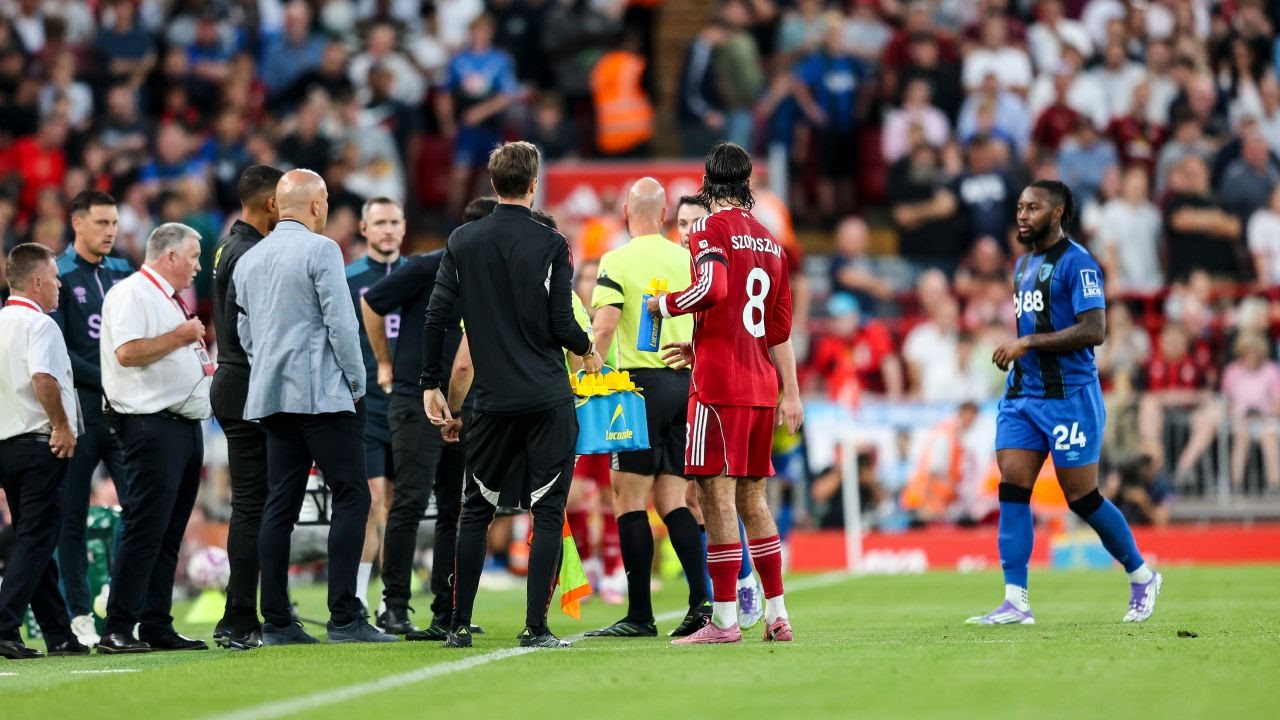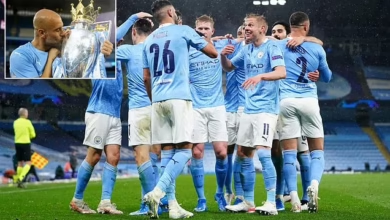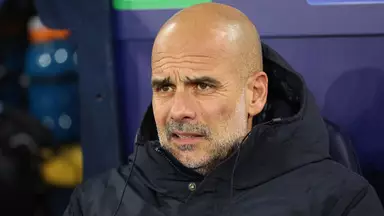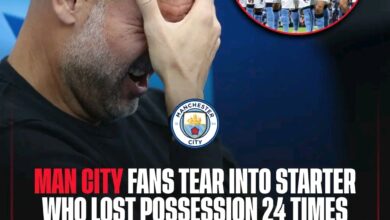Unity Against Hatred: The Premier League Incident That Showcased Football’s Fight Against Racism

The 2025 Premier League season began with all the familiar fanfare and excitement that accompanies English football’s return. Anfield, that cathedral of football passion, was alive with anticipation as Liverpool prepared to host AFC Bournemouth in what promised to be an entertaining curtain-raiser to the new campaign. The atmosphere was electric, the players eager, and the supporters ready to roar their teams toward victory. Yet within the space of twenty-six minutes, this celebration of the beautiful game would be tainted by an incident that would serve as a stark reminder of the ongoing battle against discrimination in football.
The arrest of a 47-year-old man following allegations of racist abuse directed toward Bournemouth’s Antoine Semenyo transformed what should have been a joyous occasion into a moment of reckoning for the sport. This incident, occurring during the very first match of the Premier League season, cast an immediate shadow over the league’s return and highlighted the persistent challenges that football continues to face in its fight against racism and discrimination.
As the clock ticked toward the half-hour mark of what had been an entertaining encounter between two ambitious teams, the match took an unexpected and disturbing turn. Antoine Semenyo, the 25-year-old Ghanaian winger who had been one of Bournemouth’s standout performers throughout the previous season, found himself at the center of an incident that would transcend the normal boundaries of sporting competition.
The moment occurred as Semenyo approached the touchline to retrieve a ball for what appeared to be a routine throw-in. This is one of football’s most mundane moments – a simple restart that happens dozens of times during every match. Yet as broadcast cameras captured the scene, viewers witnessed something far more sinister than a standard piece of match action. A supporter in the crowd could be seen engaging aggressively with the young forward, shouting and pointing in a manner that immediately suggested something was amiss.
The visual evidence was clear and disturbing. The fan’s body language was confrontational and hostile, his gestures unmistakably directed at Semenyo with an intensity that went far beyond normal supporter passion. While the exact words spoken could not be captured by the television microphones, the aggressive nature of the interaction was apparent to anyone watching. Semenyo, displaying remarkable professionalism and composure, attempted to continue with the throw-in, but the damage had already been done.
What happened next would provide a powerful counter-narrative to the hatred that had just been displayed. Rather than allowing the incident to pass unremarked or unaddressed, the football community’s response was swift, unified, and uncompromising. Within minutes of the alleged abuse, the match’s rhythm was disrupted not by the incident itself, but by the collective decision to address it head-on.
Referee Anthony Taylor, one of the Premier League’s most experienced officials, made the crucial decision to temporarily halt proceedings. This wasn’t a routine stoppage for injury or tactical discussions; this was a deliberate intervention designed to address what had clearly become a serious situation. The decision to stop play demonstrated the progress that football has made in recent years regarding the protocols for dealing with discriminatory behavior.
The scene that unfolded in the technical area was remarkable for its unity and purpose. Managers from both teams – Liverpool and Bournemouth – came together with match officials and players to discuss the incident. This wasn’t about tactical adjustments or dispute resolution; this was about standing together against behavior that has no place in football or society more broadly.
The sight of Liverpool and Bournemouth officials standing shoulder-to-shoulder, united in their condemnation of the alleged abuse, provided a powerful visual representation of football’s evolving approach to discrimination. Gone are the days when such incidents might be ignored or downplayed. Instead, the modern game has developed robust protocols and, more importantly, a collective will to confront racism wherever it appears.
Perhaps the most extraordinary aspect of this entire incident was Antoine Semenyo’s response both during and after the match. Having been subjected to alleged racist abuse, many players might have struggled to maintain their focus and composure. The psychological impact of such treatment, particularly when it occurs in front of thousands of spectators and millions of television viewers, can be devastating.
Instead, Semenyo channeled whatever emotions he was feeling into his performance on the pitch. His response was nothing short of spectacular, scoring both of Bournemouth’s goals in what would ultimately be a 4-2 defeat to Liverpool. These weren’t just any goals; they were moments of individual brilliance that demonstrated not only his technical ability but his incredible mental strength and resilience.
His first goal showcased the kind of clinical finishing that has made him such a valuable asset for Bournemouth. The precision required to find the target while dealing with the psychological aftermath of abuse demonstrates remarkable mental fortitude. His second goal was even more impressive, a perfectly executed counter-attack that required pace, composure, and technical excellence under pressure.
The symbolism of Semenyo’s performance cannot be overstated. By responding to hatred with excellence, by answering discrimination with demonstration of his undeniable talent, he provided the most powerful possible response to those who would seek to diminish him based on his race. His goals became more than just sporting achievements; they became statements of defiance against prejudice and assertions of his right to belong on football’s biggest stages.
Semenyo’s social media statement following the match provided further evidence of his remarkable character and maturity. Rather than allowing the incident to overshadow what had been an outstanding individual performance, he chose to focus on the positive response from the football community. His decision to emphasize the unity shown by players, officials, and genuine supporters demonstrated a wisdom and perspective that belied his young age.
“The night will stay with me forever – not because of one person’s words, but because of how the entire football family stood together,” Semenyo wrote. This statement perfectly encapsulated the incident’s broader significance. While one individual had chosen to express hatred and prejudice, the overwhelming response had been one of solidarity and support.
His gratitude toward both Bournemouth teammates and Liverpool players highlighted one of football’s greatest strengths: its ability to unite people across tribal divides when confronted with genuine injustice. The fact that Liverpool players, despite being opponents on the pitch, joined in supporting Semenyo demonstrates the evolution of football culture and the growing recognition that some things transcend sporting rivalry.
“Scoring those two goals felt like speaking the only language that truly matters on the pitch,” Semenyo continued. This profound observation speaks to football’s unique power as a universal language that transcends cultural, linguistic, and racial boundaries. On the football pitch, talent speaks louder than prejudice, skill matters more than skin color, and ability trumps all other considerations.
The swift action taken by Merseyside Police demonstrated the seriousness with which such incidents are now treated by law enforcement agencies. The arrest of the 47-year-old suspect within hours of the incident shows that the days of racist abuse being treated as mere “banter” or acceptable supporter behavior are long gone.
“We have arrested a man following reports racist abuse was directed towards Bournemouth player Antoine Semenyo during his team’s Premier League fixture versus Liverpool at Anfield on Friday 15 August,” the police statement read. The formal nature of this announcement, coupled with the speed of the response, sends a clear message to potential perpetrators that such behavior will face serious legal consequences.
The fact that the suspect’s identity was confirmed and he was removed from the ground immediately following the report demonstrates the effectiveness of modern stadium security and surveillance systems. Football stadiums are now equipped with sophisticated camera networks and security protocols that make it increasingly difficult for perpetrators of abuse to escape identification and consequences.
This represents a significant evolution from previous eras when such incidents might have gone unnoticed or unaddressed. The combination of improved technology, better protocols, and increased awareness has created an environment where racist behavior is more likely to be detected, reported, and punished than ever before.
The English Football Association’s statement following the incident reflected the organization’s evolved approach to dealing with discrimination. Rather than issuing perfunctory condemnations or treating the matter as an isolated incident, the FA demonstrated genuine concern and commitment to meaningful action.
“We are concerned about the alleged discrimination from an area of the crowd,” the FA statement read, before pledging to work with authorities, both clubs, and match officials to “establish the facts and ensure the appropriate action is taken.” This response reflects a more sophisticated understanding of how to address discrimination incidents, emphasizing thorough investigation and coordinated action rather than symbolic gestures.
The FA’s commitment to working with multiple stakeholders demonstrates recognition that effectively combating racism requires collaborative effort. By involving clubs, officials, and law enforcement agencies, the organization is creating a comprehensive response that addresses both the immediate incident and the broader systemic issues that allow such behavior to persist.
This approach represents significant progress from historical responses to racist incidents, which often focused on damage limitation rather than meaningful action. The modern FA appears committed to using such incidents as opportunities to strengthen anti-discrimination measures rather than simply managing public relations consequences.
While this incident at Anfield was shocking in its timing and visibility, it unfortunately represents part of a broader pattern of racist abuse that continues to plague football at all levels. Despite decades of campaigns, educational initiatives, and punitive measures, discriminatory behavior persists in football stadiums around the world.
The persistence of such behavior reflects broader societal challenges around racism and discrimination. Football stadiums, as gathering places for large numbers of people from diverse backgrounds, inevitably reflect the prejudices and tensions that exist in wider society. However, the sport’s global reach and cultural significance also provide unique opportunities to challenge these attitudes and promote positive change.
Recent years have seen numerous high-profile incidents of racist abuse in football, from international matches interrupted by monkey chants to social media harassment of players following important matches. Each incident serves as a reminder that the fight against discrimination in football is far from over, despite the significant progress that has been made.
The challenge for football authorities, clubs, and supporters is to maintain vigilance and continue pushing for progress even when faced with the discouraging reality that such incidents continue to occur. The response to this Anfield incident suggests that the football community is increasingly unwilling to tolerate discriminatory behavior and is developing more effective mechanisms for addressing it when it occurs.
One of the most encouraging aspects of this incident was the collective response from all stakeholders involved. The unity displayed by players, officials, and genuine supporters provided a powerful counter-narrative to the hatred expressed by one individual. This collective response demonstrates football’s potential to serve as a force for positive social change.
The decision by Liverpool players to support their opponent despite the competitive context of the match speaks to the values that define professional football at its best. These players recognized that their shared humanity and professional brotherhood transcended any sporting rivalry. Their willingness to stand with Semenyo sent a clear message about the values that the football community aspires to uphold.
Similarly, the support from match officials and both clubs’ management demonstrated institutional commitment to anti-discrimination principles. This wasn’t merely about following protocols or managing public relations; it was about taking a principled stand against behavior that violates fundamental human dignity.
The broader football community’s response on social media and in subsequent statements further reinforced this message of unity. Supporters from clubs across the Premier League and beyond expressed solidarity with Semenyo and condemnation of the racist behavior. This groundswell of support demonstrates that while racist individuals may still exist within football’s fanbase, they represent an increasingly isolated minority.
The swift identification and arrest of the suspect also highlighted the significant advances that have been made in stadium security and incident response procedures. Modern football stadiums are equipped with sophisticated surveillance systems that make it much easier to identify perpetrators of abuse and gather evidence for potential prosecution.
These technological advances have been complemented by improved training for stadium staff and security personnel, who are now better equipped to recognize and respond to incidents of discrimination. The protocols that allowed for the quick identification and removal of the suspect represent years of development and refinement in response to previous incidents.
The collaboration between match officials, club security, and law enforcement agencies demonstrated the effectiveness of coordinated response systems. Rather than each organization operating in isolation, the various stakeholders worked together seamlessly to address the incident and ensure appropriate action was taken.
This systematic approach to incident response represents a significant improvement over historical approaches, which often suffered from poor communication and unclear responsibilities. The modern framework provides clear guidelines for how such incidents should be handled, reducing the likelihood of inappropriate responses or missed opportunities for action.
The incident also highlighted the important role that television broadcasting plays in both exposing and addressing discriminatory behavior. The fact that the cameras captured the initial interaction between the fan and Semenyo provided crucial evidence that would prove invaluable in the subsequent investigation and prosecution.
Modern broadcasting technology, with its multiple camera angles and high-definition footage, makes it increasingly difficult for perpetrators of abuse to escape detection. This technological capability, combined with broadcasters’ willingness to highlight such incidents rather than ignoring them, creates a powerful deterrent effect.
The media’s coverage of the incident also demonstrated more sophisticated understanding of how to report on racist abuse. Rather than sensationalizing the incident or giving disproportionate attention to the perpetrator, coverage focused on the positive response from the football community and Semenyo’s remarkable resilience.
This approach to reporting represents significant evolution from historical coverage of racist incidents, which sometimes inadvertently amplified discriminatory messages or failed to adequately condemn such behavior. Modern media coverage increasingly emphasizes the unacceptability of racist abuse while celebrating the positive values that football can represent.
The arrest of the suspect sends a clear message about the legal consequences that await those who engage in racist abuse at football matches. While some might dismiss such behavior as harmless “banter” or traditional supporter passion, the law increasingly recognizes it as a serious form of harassment and discrimination.
The swift police action also demonstrates the priority that law enforcement agencies now place on addressing hate crimes. Rather than treating such incidents as minor public order offenses, they are increasingly recognized as serious crimes that require thorough investigation and appropriate punishment.
The social consequences for the perpetrator are likely to be equally significant. In an era of social media and widespread connectivity, individuals identified as engaging in racist behavior often face broader social and professional consequences beyond any legal punishment. This social accountability provides an additional deterrent that complements formal legal measures.
While the immediate focus following such incidents is necessarily on punishment and condemnation, they also provide valuable opportunities for education and long-term change. The widespread attention generated by this incident creates space for broader conversations about racism, discrimination, and the values that football should represent.
Educational initiatives that use such incidents as teaching moments can be particularly effective because they connect abstract principles about equality and respect to concrete, high-profile examples that people can understand and relate to. The emotional impact of seeing a talented young player subjected to abuse purely because of his race can be more powerful than any number of theoretical discussions about discrimination.
Schools, community organizations, and football clubs themselves can use incidents like this to facilitate discussions about racism, its impacts, and ways to combat it. These conversations are particularly important for young people, who represent the future of football fandom and have the potential to create more inclusive sporting environments.
The long-term goal must be to create football environments where such incidents become not just unacceptable but literally unthinkable. This requires sustained effort across multiple fronts, from education and awareness-raising to enforcement and punishment.
This incident at Anfield represents one battle in a much larger war against discrimination in football and society more broadly. While the swift response and unified condemnation were encouraging, they also serve as reminders of how much work remains to be done.
Football’s global reach and cultural significance provide unique opportunities to challenge discriminatory attitudes and promote positive values. When football’s biggest stars, most prestigious clubs, and most influential organizations take principled stands against racism, they can influence attitudes and behaviors far beyond the sporting realm.
However, the persistence of such incidents also demonstrates that symbolic gestures and reactive responses, while important, are insufficient on their own. Meaningful progress requires sustained commitment to education, enforcement, and systemic change that addresses the root causes of discriminatory behavior.
The challenge for football authorities is to maintain momentum in the fight against discrimination even when incidents are not making headlines. The real test of commitment comes not in high-profile responses to widely reported incidents, but in the day-to-day work of creating more inclusive environments and challenging discriminatory attitudes wherever they appear.
Antoine Semenyo’s response to the abuse he suffered provides a masterclass in resilience, professionalism, and grace under pressure. His decision to channel his emotions into his performance on the pitch resulted in two spectacular goals that will be remembered long after the identity of his abuser has been forgotten.
The quality of his goals was particularly significant given the context in which they were scored. The first demonstrated clinical finishing ability, while the second showcased pace, composure, and technical excellence that few players could match. That he was able to produce such performances while dealing with the psychological impact of racist abuse speaks volumes about his character and mental strength.
His post-match statement revealed a maturity and perspective that many older players might struggle to demonstrate in similar circumstances. Rather than allowing bitterness or anger to dominate his response, he chose to focus on the positive support he had received and the unity that the football community had demonstrated.
“Scoring those two goals felt like speaking the only language that truly matters on the pitch,” he wrote. This profound observation captures something essential about football’s power to transcend social divisions and provide platforms for individual expression and excellence.
Liverpool Football Club’s response to the incident was particularly significant given that it occurred at their home stadium. Rather than adopting a defensive posture or attempting to minimize the seriousness of what had happened, the club embraced their responsibility to address the situation comprehensively.
The fact that Liverpool players immediately stood in solidarity with their opponent demonstrated values that transcend sporting competition. In the heat of a competitive match, with points at stake and reputations on the line, these players chose to prioritize human dignity over sporting advantage.
This response reflects the culture that Liverpool has worked to cultivate both within their squad and throughout their organization. The club’s commitment to anti-discrimination principles has been demonstrated repeatedly in recent years, and their response to this incident reinforced their reputation as an organization that takes such matters seriously.
The support from Liverpool supporters was equally significant. While one individual had brought shame upon the club and its fanbase, the overwhelming response from genuine Liverpool supporters was one of condemnation and solidarity with Semenyo. This demonstrates that racist individuals represent a tiny minority within football’s broader community
The handling of this incident also demonstrated how far football’s institutional responses to discrimination have evolved. The coordinated response involving match officials, both clubs, law enforcement, and football authorities showed a level of sophistication and preparation that would have been unimaginable in previous decades.
The protocols that enabled such swift action are the result of years of development, learning from previous incidents, and gradual improvement in procedures and training. The fact that everyone involved knew their roles and responsibilities, and that the response was coordinated rather than chaotic, demonstrates genuine institutional progress.
The English Football Association’s statement reflected this institutional evolution. Rather than issuing generic condemnations or relying on platitudes, their response demonstrated genuine concern and commitment to meaningful action. Their pledge to work with all relevant parties to “establish the facts and ensure the appropriate action is taken” suggests a thorough and professional approach to incident investigation and response.
The media coverage of this incident also demonstrated evolution in how discriminatory behavior in football is reported and discussed. Rather than sensationalizing the abuse or giving disproportionate attention to the perpetrator, coverage focused appropriately on the positive response from the football community and Semenyo’s remarkable resilience.
This approach to reporting helps to shape public understanding of such incidents in constructive ways. By emphasizing the unity and support that emerged in response to the abuse, rather than dwelling on the hatred itself, media coverage can help reinforce positive values and demonstrate that discriminatory behavior is rejected by the broader community.
The widespread coverage also ensured that the incident received the attention it deserved, preventing it from being swept under the carpet or treated as insignificant. This visibility is crucial for maintaining pressure on institutions to take meaningful action and for educating the public about the ongoing challenges that football faces.
As the football community reflects on this incident and its aftermath, several important lessons emerge. First, the swift and unified response demonstrates that football has developed effective mechanisms for addressing discriminatory behavior when it occurs. The protocols, procedures, and institutional commitment that enabled such a comprehensive response represent genuine progress.
Second, Semenyo’s resilience and the support he received illustrate football’s potential to serve as a force for positive social change. When the football community stands united against discrimination, it sends powerful messages that extend far beyond the sporting realm.
Third, the incident serves as a reminder that vigilance remains essential. Despite all the progress that has been made, discriminatory attitudes persist, and the fight against racism in football requires sustained commitment and continuous effort.
The legacy of this incident should not be defined by the hatred expressed by one individual, but by the unity and support demonstrated by the overwhelming majority of the football community. Semenyo’s goals, the solidarity shown by players and officials, and the swift action taken by authorities all contribute to a narrative of progress and hope.
The incident at Anfield during the Premier League’s season opener serves as both a sobering reminder of the challenges that remain and an encouraging demonstration of how far football has come in addressing discrimination. While the racist abuse suffered by Antoine Semenyo was unacceptable and deeply troubling, the response from the football community provided hope and inspiration.
Semenyo’s remarkable resilience, demonstrated through both his on-pitch performance and his thoughtful post-match statement, exemplifies the best of football’s values. His ability to respond to hatred with excellence and to focus on unity rather than division provides a template for how such challenges should be met.
The swift action by authorities, the unity displayed by players and officials, and the overwhelming support from genuine football supporters all demonstrate that while racist individuals may still exist within football’s community, they represent an increasingly isolated and rejected minority.
As the Premier League season continues, this incident will serve as both a warning and an inspiration. It reminds all stakeholders that the fight against discrimination requires constant vigilance and commitment. Simultaneously, it demonstrates that when the football community stands united against hatred, it possesses the power to overcome prejudice and create environments where talent and character matter more than race or background
The true measure of progress will be whether football can build upon this moment of unity to create lasting change that makes such incidents increasingly rare and ultimately eliminates them entirely. That goal remains aspirational, but incidents like this, and the responses they generate, suggest that football is moving steadily in the right direction.














